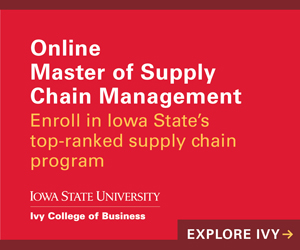Stronger production wages spur growth in Iowa’s economy

BUSINESS RECORD STAFF Jun 3, 2021 | 3:48 pm
2 min read time
403 wordsAll Latest News, Economic DevelopmentIowa’s economy grew in May behind strengthening wages in manufacturing production, according to a survey of supply chain managers released this week.
Creighton University’s Mid-America Business Conditions Index for Iowa rose to 70.2 in May from 67.9 in April.
Much of that growth was the result of increasing wages, said Ernie Goss, director of Creighton University’s Economic Forecasting Group and the Jack A. MacAllister Chair in Regional Economics.
“According to the U.S. Bureau of Labor Statistics, average hourly wages for manufacturing production workers rose 7.3% over the last 12 months,” Goss said. “Wage gains were much healthier among nondurable goods producers than for durable goods manufacturers over the 12-month period.”
The monthly survey produces a mathematical average of new orders, production or sales, employment, inventories, and delivery lead times for each state in a nine-state region: Iowa, Arkansas, Kansas, Minnesota, Missouri, Nebraska, North Dakota, South Dakota and Oklahoma. The index ranges between zero and 100, with an index greater than 50 indicating an expanding economy over the next three to six months.
In Iowa, the index for new orders was 72.2, production or sales was at 65.7, delivery lead time measured 86.7, employment was 53.8, and the index for inventories was at 74.6.
For the region, the index slipped slightly to 72.3 in May, down from a record high of 73.9 in April. Although the index remained strong, supply chain managers said labor shortages and supply bottlenecks continue to restrain growth.
“Since bottoming in April of last year, Mid-America has added approximately one million jobs for an 8.3% advancement,” Goss said in the report. “Creighton’s monthly survey results indicate that the region is adding manufacturing business activity at a healthy pace, and that growth will remain strong with the overall regional economy returning to pre-pandemic levels in the first quarter of 2022.”
Highlights from the report include:
- The wholesale inflation gauge for the month surged to a record high 96.3 from April’s 96.2, the previous record high.
- Almost 30% of supply managers identified soaring input prices as the greatest economic challenge in 2021.
- Almost 23% of manufacturers named finding and hiring qualified workers as the greatest 2021 challenge.
- As a result of shortages of workers, average hourly wages for regional manufacturing production workers advanced by a strong 4.9% over the past 12 months, according to the U.S. Bureau of Labor Statistics data.
- Supply bottlenecks pushed deliveries to their slowest pace on record.









